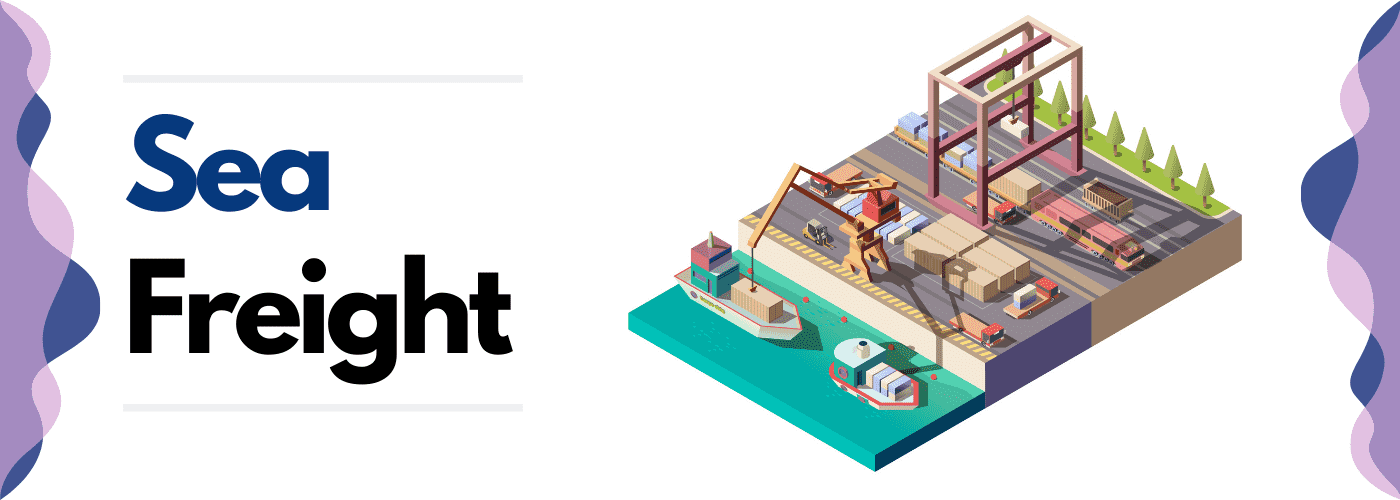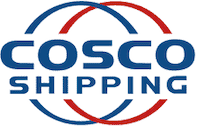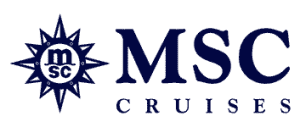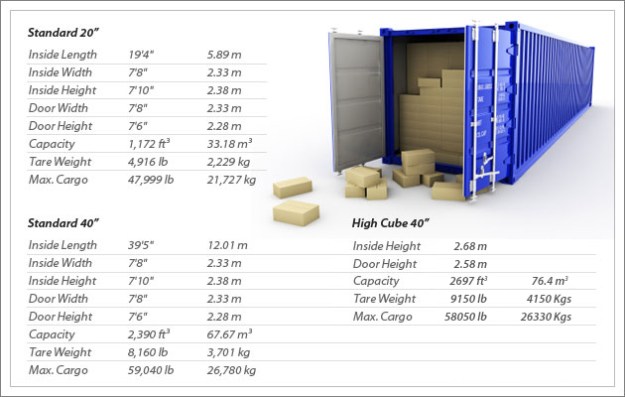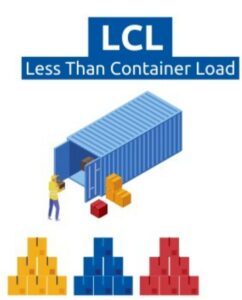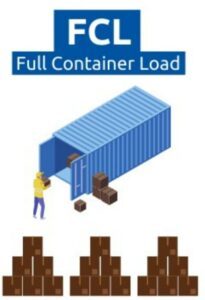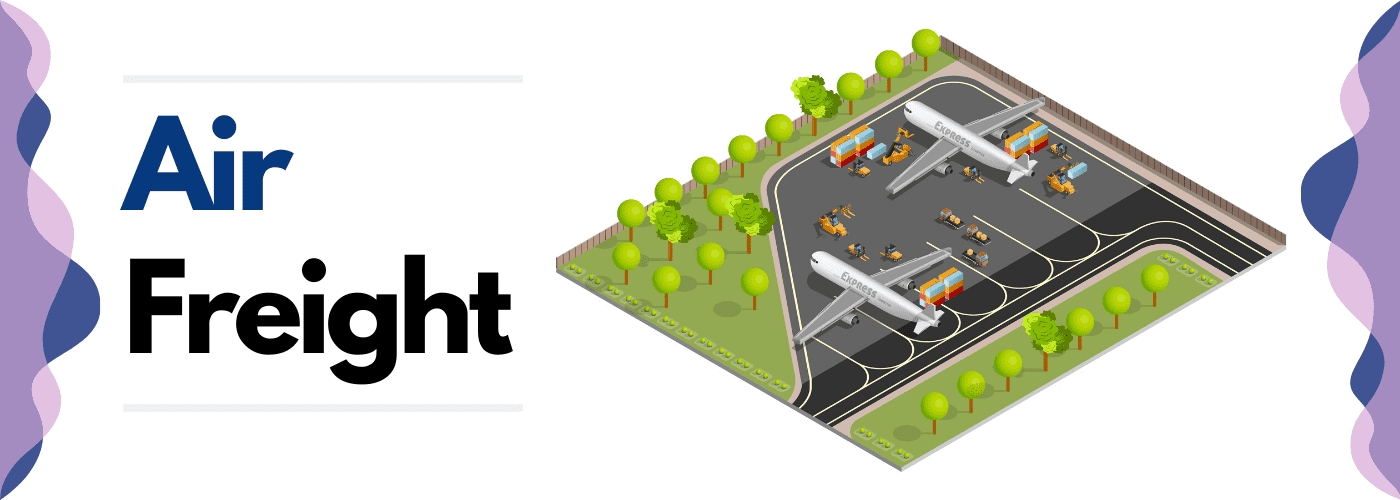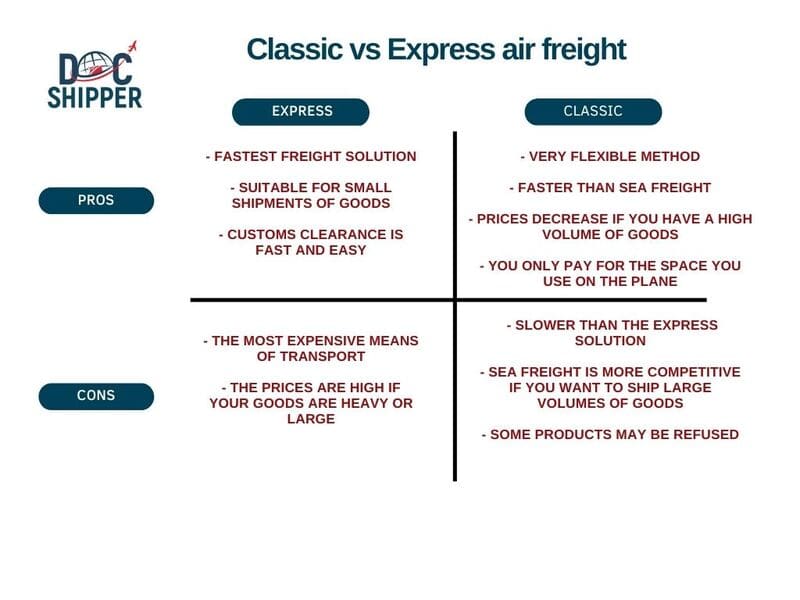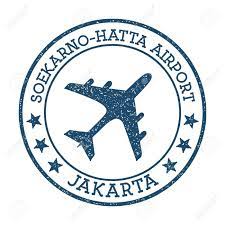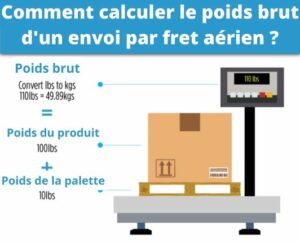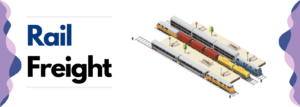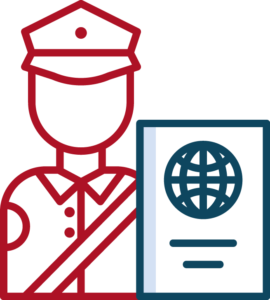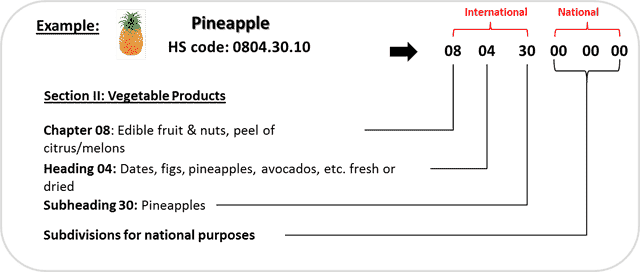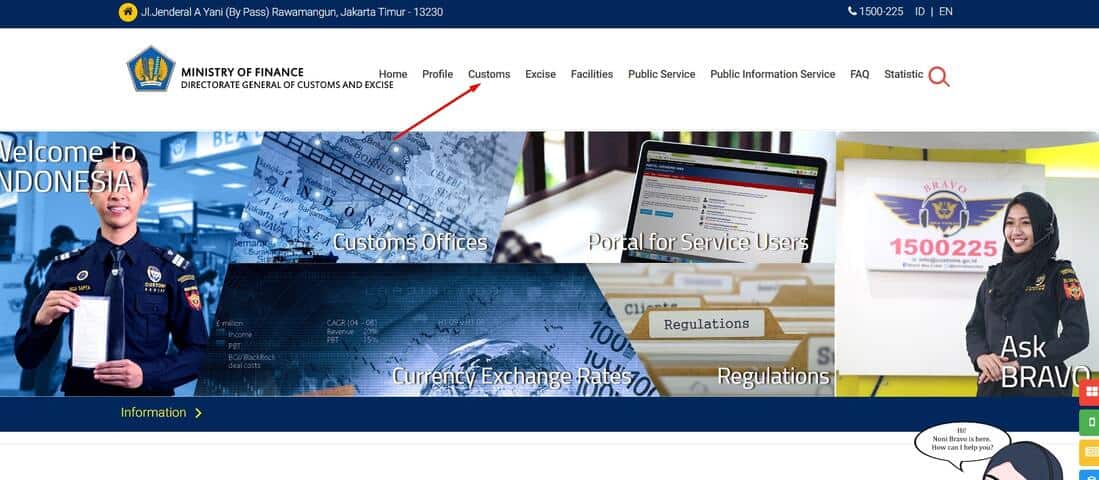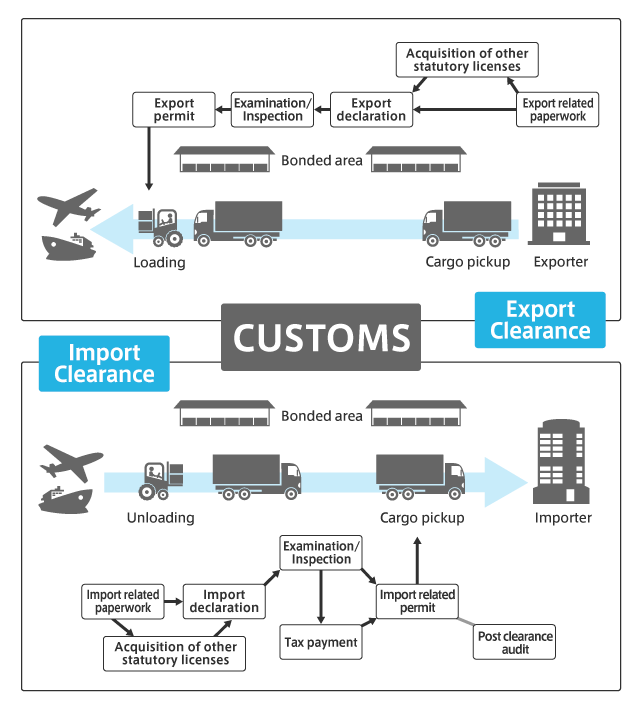Indonesia has close trade links with many Asian countries, and Thailand is no exception. Thailand is very open to international trade. In 2020, Indonesia was Thailand's 8th-largest trading partner in terms of exports, while Thailand was Indonesia's second-largest trading partner in Southeast Asia. Thailand's main exports to Indonesia are electronics, vehicles, seafood, and agricultural products.
This guide will help you through exporting from Thailand to Indonesia. You'll be able to easily choose the most suitable mode of transport, understand the customs clearance process and receive valuable advice from our experts at Siam Shipping.
Table of Contents
What is the most suitable method of transport between Thailand and Indonesia?
There are 4 modes of transport, air freight, sea freight, road freight, and rail freight. However, in the situation of Thaïland to Indonesia the railway modality does not exist, at least not yet, and road freight is really not recommended because of the great distance between the two countries.
Therefore, there are two ways to transport containers from Thailand to Indonesia or vice versa, either sea freight or air freight.
Sea freight from Thailand to Indonesia
Siam Shipping Recommendation: Sea freight is the best option for you if :
- If you need to ship a large quantity of goods
- Ocean freight can also be a good option for large goods
- Long distance shipments can be more cost effective
Siam Shipping Note: If you want some advice, don't hesitate and contact us, we will answer you in less than 24 hours !
Overview – Ocean cargo from Thailand to Indonesia
Bilateral relations between Indonesia and Thailand are close and characterized by mutually beneficial cooperation in many areas. The two countries enjoy strong diplomatic ties, and share common interests in trade, tourism, culture and regional security.
Economically, Indonesia and Thailand are major trading partners. Trade between the two countries has grown steadily over the years. In 2020, Indonesia was Thailand's eighth largest trading partner in terms of exports, while Thailand was Indonesia's second largest trading partner in Southeast Asia. The main products traded include electronics, vehicles, seafood and agricultural products.
In terms of regional cooperation, Indonesia and Thailand play an active role in regional organizations such as the Association of Southeast Asian Nations (ASEAN). The two countries work closely together to promote stability and prosperity in the region, as well as to tackle common challenges such as maritime security and the fight against terrorism.
All in all, bilateral relations between Indonesia and Thailand are marked by cooperation and partnership. The two countries continue to strengthen their ties in various fields to promote mutual development and regional stability.
Main ports in Thailand
The Port of Bangkok
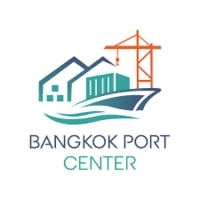
Laem Chabang Port
The Laem Chabang Port is located about 130 kilometers southeast of Bangkok in Chonburi province. It is the second-largest port in Thailand and is connected to the national railway network for the transportation of goods to the interior of the country.
Map Ta Phut Port
Located in Rayong province, the Map Ta Phut Port is on the east coast of Thailand, this port is an important center for the country's petrochemical industry. It has a rail yard and is connected to the national rail network.
Chiang Saen Port
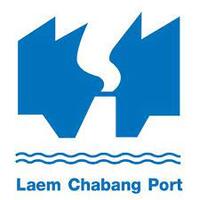
TOP 5 – Shipping line
Main ports in Indonesia
Port of Tanjung Priok
Located in Jakarta, the port of Tanjung Priok is the largest in Indonesia and one of the busiest in Southeast Asia. It plays a crucial role in the country's commercial exchanges, particularly for imports and exports.
Port of Belawan
Located in Medan, in the province of North Sumatra, the port of Belawan is the second largest in Indonesia. It is strategically located on the Strait of Malacca, a major seaway linking the Indian Ocean to the South China Sea.
Port de Tanjung Perak
Located in Surabaya, in the province of East Java, the port of Tanjung Perak is one of the oldest in Indonesia. It plays a key role in the region's trade and is a major entry point for goods to and from eastern Indonesia.
Transit time between Indonesia ports and Thailand ports
Here is a summary table of the average transit times, in days, between the largest Indonesian and Thai ports.
| Bangkok |
|
Map Ta Phut | ||
| Tanjung Priok | 7 jours | 7 jours | 7 jours | |
| Belawan | 17 jours | 17 jours | 17 jours | |
| Tanjung Perak | 54 jours | 53 jours | 54 jours |
*These transit times between Indonesia and Thailand are given as an indication.
Should I ship by groupage or full container between Indonesia and Thailand?
There are three main categories of standard container sizes:
- The 40-foot HQ (High Cube), with a capacity of 76 cubic meters.
- The 40-foot container, with a capacity of 67 cubic meters.
- The 20-foot container, with a capacity of 33 cubic meters.
Each of these containers can be shipped by two different transportation methods.
LCL
Less than Container Load: This type of shipment, allows several people, who do not have enough goods to fill an entire container, to use the same container. The goods of various people are thus combined to fill an entire container.
This is the most cost-effective choice for small shipments of less than 15 m³.
Advantages of LCL
- The advantageous rate for small volumes.
- Allows for fewer but more frequent shipments, reducing storage expenses.
Disadvantages of LCL
- Often longer delivery times due to loading and unloading of goods from all customers.
- Increased risk of loss and damage from multiple loading and unloading.
FCL
Full Container Load: For this type of shipment, one person will use the entire capacity of the container. This minimizes the risk of damage to the goods.
This method would still be advantageous even if you did not fill the container completely. However, it is the most cost-effective for shipments over 15 m³.
Advantages of FCL
- The advantageous rate for large shipments of goods.
- Reduced risk of damage or loss of goods because containers are not opened during transit.
Disadvantages of FCL
- A minimum volume of at least 15 m³ to be profitable.
Siam Shipping Alert: There are certain risks associated with LCL loading. During sea freight, your purchases may be damaged. Also, if your container partner encounters difficulties with customs during clearance, your customs clearance procedure may be delayed as well. Don't hesitate to contact us if you have any questions.
Special transports by sea between Thailand and Indonesia
Reefer container
The reefer container is used to transport chemicals or perishable products at controlled temperatures. It is equipped with a cooling system.
Roro
RORO (Roll On/Roll Off) vessels are used to transport vehicles such as cars, trucks, vans, semi-trailers, and rail cars. They are considered the safest and most efficient vessels for heavy or special cargo.
Bulk
Bulk carriers are used to transport solid bulk materials such as minerals, grains, coal, or liquids such as crude oil, gas, and chemicals. These vessels are larger and easier to load and unload.
OOG
OOG cargo is cargo that exceeds the dimensions of a standard container. Two types of containers exist for these goods:
- Open Top Container: they have no roof, which allows loading cargo that exceeds the height of the containers.
- Flat Rack Container: these are flat containers without side walls or roofs, used for goods that cannot be loaded in standard containers.
How much does the sea freight cost between Thailand and Indonesia?
The cost of sea freight between Indonesia and Thailand will depend on several factors such as the type of cargo being shipped, the volume and weight of the cargo, the distance between the ports of origin and destination, the shipping method, and the current market conditions.
In general, the average cost of shipping a 20-foot container (TEU) from Indonesia to Thailand is approximately US$1,500 to US$3,000, depending on the shipping company, the port of origin and destination, and the time of year.
It is possible to estimate the cost if you know the exact weight and volume of your goods. To do this, you must follow these 3 steps:
- Determine the PU (Paying Unit): for this, you need to compare the mass and volume of your cargo based on the theory of sea freight, which states that one ton = 1 m³. The higher value between volume and mass will be the UP. For example, for a volume of 20 m³ and a mass of 25 tons, the UP will be 25 tons.
- Calculate the basic freight: to do this, multiply the cost of the UP by its number.
- Calculate the net freight: with the following formula, Base freight + BAF + CSP - Rebate. The result will be the cost of your sea freight.
Tariff surcharges
Tariff surcharges may apply on your transport between Indonesia and Thailand, here are the main ones:
- Bunker Adjustment Factor (BAF): This surcharge is applied according to fluctuations in the price of fuel and may vary regularly depending on market conditions.
- Security Surcharge (SCS): This surcharge is applied to cover costs related to port and vessel security.
- Overcapacity surcharge (OWS): This surcharge is applied when demand for shipping is lower than supply, resulting in excess vessel capacity.
- Congestion surcharge (CGS): This surcharge is applied in ports where congestion is high, resulting in extended waiting times for ships.
Air freight from Thailand to Indonesia
Siam Shipping Recommendation:
Airfreight is the best solution for you if :
- Air freight is the fastest mode of transport available
- If the transportation time must be very quick
Siam Shipping Note: If you require any information, fulfil our online form and our experts will get back to you in less than 24 hours.
Classic or Express air freight
There are two types of air freight:
- Classic air freight: This option uses the space available on board commercial flights of airlines such as Garuda Indonesia, Thai Airways, China Southern Airlines, or even Lion Air and exploits the empty spaces.
- Express airfreight: This option uses aircraft dedicated solely to airfreight. This solution is offered by courier companies, such as FedEx, DHL, UPS, or even TNT, which offers door-to-door solutions.
What are the advantages of air freight?
- Speed of transport
- Rarely late
- Good geographical coverage
What are the disadvantages of air freight?
- High price
- Not possible to transport really heavy goods
- The security at the airport is much higher which can make you lose time during the control
Main airports in Thailand
Suvarnabhumi Airport

Additional information:
- It has the highest control tower in the world.
- Its terminal is the third largest in the world with 56.3 hectares.
- Forecasted increase in cargo and aviation capacity.
Don Mueang Airport
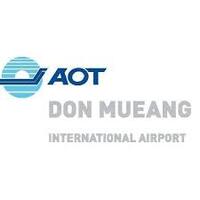
Additional information:
- 700,000 tons of cargo were handled by this airport.
- It worked with 80 airlines
Chiang Mai Airport

Additional information:
- 16,000 tons of annual cargo
- More than 15,000 flights and 2,000,000 passengers annually
Main airports in Indonesia
Soekarno-Hatta International Airport (CGK)
Located in Tangerang, near Jakarta, Soekarno-Hatta Airport is Indonesia's main airport. It is the main point of entry for international and domestic travelers, with numerous domestic and international flights serving a wide variety of destinations.
Ngurah Rai International Airport (DPS) - Bali
Located in Denpasar, Bali, Ngurah Rai Airport is one of Indonesia's busiest airports. It is the main gateway for tourists visiting the island of Bali, offering domestic and international flights to many destinations in Asia, Australia and the Middle East.
Aeroport international Soetta Sultan Hasanuddin(UPG) - Makassar
Located in Makassar, in the province of South Sulawesi, Sultan Hasanuddin Airport is one of Indonesia's most important airports for domestic and international flights. It serves the central and eastern regions of Indonesia, as well as international destinations.
Transit time between Indonesia ports and Thailand airports
Here is a summary table of the average transit times, in days, between the largest Indonesian and Thai airports.
Suvarnabhumi |
Don Mueang |
Chiang Mai |
|
Soekarno-Hatta |
2 jours | 2 jours | 4 jours |
Ngurah Rai |
4 heures | 3 heures | 3 heures |
Soetta Sultan Hasanuddin(UPG) - Makassar |
2 jours | 2 jours | 2 jours |
*These transit times between Indonesia and Thailand are given as an indication.
How much does it cost to transport cargo by air from Indonesia to Thaïland ?
To know the price of your goods transported from Thailand to Indonesia by air freight, you must consult the tariffs of the airline companies. Their tariffs are presented by weight bands in decreasing prices.
The weight taken into account by the airlines will always be the one that is to their advantage, that is to say, the highest between the real weight and the volumetric weight.
Siam Shipping Advice: It can be difficult to estimate the exact price of your airfreight shipment yourself. Contact us to receive a free quote within 24 hours.
How to calculate the volumetric weight of your shipment?
The volumetric weight is the volume occupied by a package, based on its dimensions and its gross weight. To know it, you must measure the dimensions of the package (length, width, and height), then convert them into cubic meters. Then use the formula below:
Volumetric weight = (length x width x height) / 5000
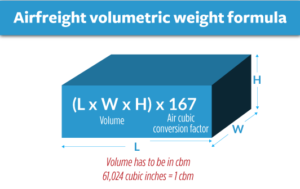
Road freight from Thailand to Indonesia
Recommandation Siam Shipping :
Air freight is the best solution for you if :
- Air freight is the fastest mode of transport available
- If transport time needs to be very short
Siam Shipping note:
If you need more information, fill in our online form and our experts will get back to you within 24 hours.
Overview – Road freight from Thaïland to Indonesia
Used to transport goods simply between different terminals, such as an office or a warehouse to or from an airport, port or railway station, road freight is a method that remains indispensable in the transportation field.
Advantages of Truck Transportation
-
Provides Door-to-Door Services
The first and foremost benefits of trucks transportation is that it provides door-to-door services to anyone who wishes to get the goods and services available at their doorstep. Trucking industries are much benefitted from these services. Local transportation companies help in providing day-to-day services.
-
Best Mode of Transportation
It is the best mode of transportation and is the cheapest of all. It is very good for short distances travels and hauls as it provides the best traveling experience. Not only that, but it is best suited for traveling within 700 km of distance.
-
Faster Delivery
Another major use of truck is that it is best suited for small cargo shipments and delivery as it will emerge out to be cheapest and best for shipments, and the distance will not matter at all.
-
Fastest for Short Transportation Services
It is considered to be the fastest for short transportation services as it will not take much time for short and very less distance hauls. So, it can be considered as best for this type of transportation.
-
Useful for Customers
The trucking business is very much useful for customers, and it provides services whenever they want, so these trucks can be used frequently for transporting goods and services.
-
Easy and Flexible
Trucking Services are very much easy and flexible, and they can go in every direction and wherever they want and wherever they want to go. The roads and streets are very much immune to these transportation services.
Siam Shipping Advice: We recommend using air freight for fragile, valuable, or perishable goods to increase security and protect your merchandise. You can get in touch with our specialists for further details if you want to learn more about transporting fragile merchandise.
Disadvantages of Truck Transportation
-
Expensive
It is considered a little expensive for long-distance transportation of goods and services. This becomes a little expensive for the traveling expenses in the transit of goods and services.
-
High Cost
Truck transporting is very much of high cost for the commodities which are little low graded and are to be transported to the other city, as it will be of high cost for the driver of truck services.
How much does it cost to ship goods by truck?
The cost of shipping goods by truck between Thailand and Indonesia can vary depending on several factors. Here are some of the factors that can influence the cost of road transport:
- The distance between the two countries is a key factor affecting transport costs. The longer the distance, the higher the cost.
- The weight and volume of the goods to be shipped play a role in determining the cost of transport. Trucks have weight and capacity limits, which can influence rates.
- Certain types of goods may require special precautions or equipment for transport. This may entail additional costs.
- The route taken can also affect the cost of road transport. Some routes may be more direct and efficient, while others may be longer and involve additional costs.
- Additional charges may be added to cover customs clearance, administrative formalities, tolls, fuel costs, etc.
What are the main routes from Thaïland to Indonesia ?
Road freight offers a practical solution for transporting goods between the two countries. It can be used to transport a wide range of goods, from manufactured products to agricultural produce and bulk goods. Trucks and trailers are often used for this type of transport.
However, it is important to note that road freight between Indonesia and Thailand may be subject to specific customs formalities and regulations. It is essential to comply with the customs requirements and import/export procedures of both countries.
Rail freight from Thailand to Indonesia
Recommandation Siam Shipping :
Air freight is the best solution for you if :
- Air freight is the fastest mode of transport available
- If transport time needs to be very short
Siam Shipping note:
If you need more information, fill in our online form and our experts will get back to you within 24 hours.
Overview – Rail freight from Thaïland to Indonesia
The two countries are linked by the Trans-Asian Railway Network (TARN), a transcontinental rail network designed to promote trade and commerce between Asian countries. The network includes rail links between several countries in the region, including Indonesia and Thailand.
Rail freight offers an alternative to other modes of transport, such as sea or air, and can be used to transport bulk or containerized goods. It can be faster than sea freight and more economical than air freight for certain goods. However, specific details such as routes, tariffs and customs formalities need to be checked with rail operators and the relevant authorities in each country.
How much does it cost to ship goods by train?
The cost of shipping goods by rail between Thailand and Indonesia can vary depending on a number of factors. Here are some of the factors that can influence the cost of rail transport:
- The distance between the two countries is a key factor affecting the cost of rail transport. The longer the distance, the higher the cost.
- The weight and volume of the goods to be shipped play a role in determining the cost of transport. Trains have specific loading capacities, which can influence the rate.
- Certain types of goods may require special precautions or equipment for transport. This may entail additional costs.
- The route taken can also affect the cost of rail transport. Some routes may be more direct and efficient, while others may be longer and involve additional costs.
What are the advantages of rail freight between Thaïland and Indonesia?
There are several advantages of using rail freight to transport goods between the UK and Germany:
- Faster than sea freight: While sea freight is often the most cost-effective option for transporting goods over long distances, it can be quite slow. Rail freight is generally faster than sea freight, with transit times between the UK and Germany typically ranging from 2–4 days.
- Environmentally friendly: Rail freight is one of the most environmentally friendly modes of transportation, producing lower levels of greenhouse gas emissions per tonne-kilometer than road or air transport. This can be an important consideration for companies looking to reduce their carbon footprint and meet sustainability targets.
- Cost-effective for large volumes: While rail freight may not always be the cheapest option for transporting small volumes of goods, it can be very cost-effective for larger volumes. This is especially true for goods that are not time-sensitive and can be transported over longer distances.
- Reliable: Rail freight is generally quite reliable, with regular departure and arrival times and fewer delays compared to road or air transport. This can be important for companies that need to meet tight delivery deadlines or have just-in-time inventory requirements.
- Good connectivity: Rail freight between the UK and Germany is well-developed, with several established routes and regular services. This can make it easy for companies to transport goods between the two countries.
Overall, rail freight can be an attractive option for companies looking to transport large volumes of goods between the UK and Germany in a cost-effective, environmentally friendly, and reliable manner.
Door-to-door delivery between Thailand and Indonesia
If you don't have time to devote to transportation, door-to-door delivery is for you. This method is simple, your goods will be picked up directly at your home, and then delivered to the desired destination. You will not need to take care of anything and your goods will be safe with professionals.
What are the advantages of door-to-door services?
- Quick delivery: As everything is completed in a 24-hour period, you can send it if your delivery time is during the day.
- Door-to-door delivery is always available, so your package will come even late at night or on a holiday.
- Convenience: Receiving the package at your location rather than having it delivered to you is better for you.
- Your cargo can be qualified for courier delivery if it is a manageable size.
What are the disadvantages of door-to-door services?
- High cost: The cost increases with the urgency of the cargo, as well as with the package's size and weight, which also affect the cost.
Customs clearance in Indonesia for goods imported from Thailand
Customs clearance in any country is an important and compulsory step that must be taken when importing or exporting.
When importing goods into Indonesia, customs clearance involves paying customs duties and VAT. You also need to pay close attention to the regulations and standards of the country you are shipping to, to avoid having your goods blocked at customs.
Here are the prohibited and regulated products in Indonesia:
- Prohibited products: drugs, counterfeit goods, plants, animals, and some dangerous materials...
- Regulated products: food (fruits, vegetables, meat, poison, milk), animals, weapons and ammunition, works of art, medicines, products…
Customs valuation
Customs valuation in Indonesia determines the value of imported goods in order to calculate the applicable duties and taxes. The competent customs authority in Indonesia is the Directorate General of Customs and Excise (DGDA).
Customs valuation is generally based on the transaction value, which corresponds to the price actually paid or payable for the imported goods. However, if the transaction value is not used or cannot be determined, other valuation methods may be used, such as the customs value of similar goods method, the deducted customs value method or the reconstructed customs value method.
It is important to note that Indonesia may require supporting documents such as purchase invoices, contracts, bills of lading and other commercial documents to prove the declared value of imported goods. Furthermore, additional duties and taxes may apply depending on the nature of the imported goods, such as anti-dumping duties, countervailing duties or value-added tax.
What are the customs duties and taxes in Indonesia?
In Indonesia, customs duties and taxes vary according to the type of merchandise imported, its country of origin and its value. Here are some key facts about customs duties and taxes in Indonesia:
- Customs duties: Customs duties are taxes imposed on goods imported into Indonesia. Duty rates may vary according to the nature of the goods, and are generally expressed as a percentage of the customs value of the goods. The classification system used in Indonesia to determine duty rates is the Indonesian National Customs Classification (Harmonized System).
- Value-added tax (VAT): VAT is a consumption tax applied in Indonesia. The standard VAT rate in Indonesia is 10%. However, certain products may benefit from reduced rates or be exempt from VAT.
- Regional Development Tax (Pajak Pembangunan Daerah, or PPHD): The PPHD is a regional tax that may apply to certain goods imported into Indonesia. PPHD rates vary by region.
- Specific taxes: In addition to customs duties, VAT and PPHD, there may be other specific taxes for certain products, such as tax on luxury goods, motor vehicle tax, etc.
How to calculate customs duties and taxes
Calculating customs duties and taxes on imports into Indonesia can be a complex process that depends on several factors, such as the type of product, its value, and its country of origin. Here are the general steps to follow:
- Customs classification: Determine the customs classification code of your goods using the Harmonized System (HS). This code represents the nature and characteristics of your product.
- Duty rates: Consult the Indonesian National Customs Classification to find the duty rate applicable to your customs classification code. Duty rates are generally expressed as a percentage of the customs value of the goods.
- Customs value: Calculate the customs value of your merchandise, which is generally based on the purchase price of the goods, including freight, insurance and other costs associated with importing.
- Customs duties: Multiply the customs value of your goods by the applicable duty rate. This will give you the amount of duty to be paid.
- Value-added tax (VAT): Apply the current VAT rate (generally 10% in Indonesia) to the customs value of the goods to calculate the amount of VAT payable.
- Specific taxes: Check whether there are any specific taxes applicable to your merchandise, such as luxury goods tax or motor vehicle tax. Consult the corresponding rates and calculate the amount of these taxes if applicable.
It's important to note that the customs clearance process and the calculation of duties and taxes can be complex. If you're unsure about how to calculate the duties and taxes for your specific import, it's always best to consult with a customs broker or freight forwarder like Siam Shipping. We can help you navigate the process and ensure that you're meeting all the necessary requirements.
How to find the HS code?
A system of classification for products used in international trade is the HS code (Harmonized System). It organizes goods into categories based on their nature and intended use, making the collection of statistical data and the customs clearance process easier. The HS system contains more than 5,000 different products, each of which is categorized using a distinct eight-digit number.
You can consult these websites to know the HS code of Thailand products and Indonesian products.
Calculating customs duties with the HS Code
To find out the customs duties and taxes applicable to your product, visit the official Indonesian customs website.
Does Siam Shipping charge customs duties?
No, no commission is taken from Siam Shipping. As proof, we will send you all the official documents provided by French customs. We will only collect the customs clearance fees, as we declare your goods to the customs for you.
Customs procedures and contact
Siam Shipping Info: Customs clearance is not the easiest part of the transportation process. However, it is a step not to be neglected if you don't want to pay additional fees or suffer delays! We advise you to contact us so that we take care of your customs clearance!
Indonesian Customs
Official name: Direktorat Jenderal Bea dan Cukai
Official website: Indonesian Customs
Required documents
Commercial invoice:
A commercial invoice detailing information on the seller, buyer, goods, quantities, unit and total prices, and other relevant details.
Bill of Lading:
This document is issued by the ocean carrier and certifies that the goods have been loaded onto the vessel. It contains information on the carrier, the ship, the loading, the unloading and the goods.
Packing List:
The packing list details the specific contents of packages or containers, including weight, dimensions, quantity and detailed description of goods.
Certificate of origin:
Some products may require a certificate of origin to benefit from preferential tariffs or to meet specific Indonesian requirements.
Transport documents:
Additional transport documents may be required, such as air freight documents (AWB) for air transport or road transport documents for land transport.
Customs documents:
Various customs documents may be required, including the customs declaration, import permit, declaration of customs value, duty and tax payment documents, etc.
Other logistics services
Storing and warehousing
We offer storage services in different countries, especially in Indonesia and Thailand. You can store your goods in our warehouse until you have enough goods to fill an entire container. This will save you transportation costs.
You can go to our specific page at: Storage services
Packing and repacking
The packaging of your products is an essential element in your transport. Good packaging ensures product stability during transport, and protection during loading, unloading and storage. Don't hesitate to contact our team if you need competent personnel to pack any type of goods.
Additional details can be found on our dedicated page: Packing Services
Insurance for transport
Transport insurance covers any damage or breakage to your goods. Without insurance, you're exposed to risk. We have negotiated with the best certified insurers to offer you the most effective insurance contract possible, both financially and in terms of security.
Visit our specific page here: Insurance services
FAQ |Freight shipping between Thaïland and Indonesia : Rates-Transit Time-Duties & Taxes
What modes of transport are available for freight shipments between Thailand and Indonesia?
The modes of transport most commonly used for freight shipments between Thailand and Indonesia are sea and air.
What are the typical transit times for freight shipments between Thailand and Indonesia?
Transit times may vary according to the mode of transport chosen. For sea freight, transit times can range from 7 to 21 days, depending on the port of departure and arrival. For air freight, transit times are generally shorter, ranging from a few days to a week.
How are freight rates between Thailand and Indonesia calculated?
Freight rates depend on a number of factors, such as the nature of the goods, the size and weight of the cargo, the distance to be covered, the mode of transport chosen and other additional costs associated with insurance and logistics services.
What information do I need to get an accurate quote for freight shipping between Thailand and Indonesia?
To obtain an accurate quotation, it is usually necessary to provide information such as the nature of the goods, cargo dimensions and weight, departure and arrival addresses, incoterms (delivery terms), as well as other specific requirements such as insurance or customs clearance.
DocShipper info: Do you like our article today? For your business interest, you may like the following useful articles :
SIAM Shipping | Procurement - Quality control - Logistics
Alibaba, Dhgate, made-in-china... Many know of websites to get supplies in Asia, but how many have come across a scam ?! It is very risky to pay an Asian supplier halfway around the world based only on promises! DocShipper offers you complete procurement services integrating logistics needs: purchasing, quality control, customization, licensing, transport...
Communication is important, which is why we strive to discuss in the most suitable way for you!

